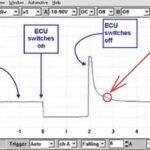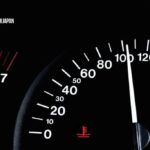Upgrading your vehicle with Racing Camshafts is a pivotal step for enthusiasts and professional racers looking to maximize engine power and performance on the track. The camshaft, a critical component within your engine, dictates the timing and duration of valve opening and closing, directly influencing airflow and combustion efficiency. Choosing the right racing camshaft can transform your engine’s character, delivering significant gains in horsepower and torque, precisely where you need it for competitive driving.
Selecting the appropriate racing camshaft requires careful consideration of your engine type, racing discipline, and desired performance characteristics. Manufacturers like Crower offer a comprehensive range of camshafts designed for various makes, including AMC, Buick, Chevy, Ford, Honda, and more, ensuring compatibility and optimized performance for your specific vehicle.
Types of Racing Camshafts: Flat Tappet vs. Roller
Racing camshafts are broadly categorized into flat tappet and roller designs, each with distinct advantages and applications in the racing world:
Hydraulic Flat Tappet Racing Camshafts
Hydraulic flat tappet camshafts (HFTC) are engineered for use with hydraulic lifters, offering a balance of performance and reduced maintenance. These camshafts are designed for quieter operation and automatic valve lash adjustment, making them suitable for street-performance vehicles that see occasional track use or milder racing applications. While they offer less aggressive valve lift profiles compared to mechanical options, modern hydraulic flat tappet racing camshafts provide a significant performance boost over stock components, enhancing throttle response and mid-range power.
Hydraulic flat tappet racing camshaft showcasing its design for quieter operation and automatic adjustment.
Hydraulic Roller Racing Camshafts
Hydraulic roller camshafts (HRC) represent an upgrade from flat tappet designs, utilizing roller lifters to minimize friction and enable more aggressive camshaft profiles. The roller bearing on the lifter allows for faster valve opening and closing rates, improving engine breathing and power output across the RPM range. Hydraulic roller racing camshafts still offer the benefit of hydraulic lifters’ self-adjusting nature, reducing maintenance while delivering enhanced performance. They are a popular choice for street-strip applications and racing classes where hydraulic lifters are permitted.
Hydraulic roller racing camshaft featuring roller lifters for reduced friction and enhanced performance.
Mechanical Flat Tappet Racing Camshafts
Mechanical flat tappet camshafts (MFTC) are designed for high-performance racing engines where maximum RPM and power are paramount. These camshafts require mechanical lifters, which, unlike hydraulic lifters, do not have internal oil cushions. This solid design allows for more aggressive camshaft profiles and higher RPM limits, typically up to 9000 RPM, but demands more frequent valve lash adjustments and maintenance. Mechanical flat tappet racing camshafts are favored in drag racing and oval track racing where top-end power is crucial.
Mechanical flat tappet racing camshaft built for high RPM and power in demanding race environments.
Mechanical Roller Racing Camshafts
Mechanical roller camshafts (MRC) represent the pinnacle of racing camshaft technology for engines requiring the ultimate in performance. Combining roller lifters with mechanical operation, these camshafts minimize friction and allow for the most aggressive valve lift profiles and fastest ramp rates. Mechanical roller racing camshafts enable engines to achieve extremely high RPMs, exceeding 9000 RPM in optimal setups, delivering maximum horsepower and torque. They are essential for professional drag racing, top-tier oval track racing, and any racing discipline where no-compromise performance is required. Like mechanical flat tappets, they necessitate regular valve lash adjustments and careful valve train setup.
Mechanical roller racing camshaft, the top tier for maximum performance and extremely high RPM racing engines.
Racing Camshaft Series: Tailored for Performance
Crower’s racing camshaft series are meticulously engineered for specific racing applications and performance levels. Understanding these series can guide you in selecting the ideal camshaft for your racing needs:
High RPM Series: 220, 230, 290, 310
- 220 High RPM Series: Designed for Hot Street, Oval Track, and Drag racing, this series prioritizes smooth lift rates for durability at high RPMs, even with high rocker ratios. It’s optimized for high RPM ranges with moderate spring pressure using Mechanical Flat Tappet Camshafts (MFTC).
- 230 High RPM Series: Specifically for Nationwide, truck, and ARCA racing, these Mechanical Roller Camshafts (MRC) demand precise matching of RPM, rocker ratio, airflow, and valve springs to maximize power within a defined RPM band.
- 290 High Rocker Ratio Series: For Hot Street, Oval Track, and Drag racing where high rocker ratios are used, this MFTC series maintains smooth lift rates for durability at high RPMs and is designed for engines with 11.5:1 or higher compression ratios.
- 310 Oval Track Series: Developed for high RPM Oval Track racing and Drag Race applications, this MRC series is Dave Crower’s favorite, excelling in applications exceeding 8500 RPM, requiring titanium valves and lightweight valve train components.
High Lift Series: 350, 390, 420
- 350 Series (High Lift): A Hydraulic Roller Camshaft (HRC) series for Hot Street applications, ranging from mild to aggressive with a lopey idle, utilizing short advertised duration and high lifts suitable for modern engine designs, offering broad power and improved manifold vacuum.
- 390 Low Rocker Ratio Roller: Race-only Mechanical Roller Camshaft (MRC) series for Drag and Oval track, featuring Crower’s fastest lift rates, requiring high spring pressure and stock or low rocker ratios for durability and valve train control in engines running 7500+ RPM.
- 420 Series: Utilizing Hydraulic Flat Tappet Camshafts (HFTC) with slow closing ramps and a ball nose lobe design for durability, this series ranges from stock replacement to Race, Oval Track, and Hot Street applications, ideal for builders seeking advanced flat tappet technology.
Specialized Racing Series: Beast, Compu-Pro, Inrad, Ultra-Action
- Beast Series: Budget-friendly Hydraulic Flat Tappet (HFTC), Hydraulic Roller (HRC), and Mechanical Roller Camshaft (MRC) series, offering versatile performance for various needs from mileage to Hot Street.
- Compu-Pro Series: A step above the Beast series, Compu-Pro (HFTC & MFTC) is tailored to specific CID groups, providing optimized performance for mileage to Hot Street applications.
- Inrad Series: Performance Racing only Mechanical Roller Camshaft (MRC) series with Inverse Radius design for extremely fast lift rates, requiring the lightest valve train, available by special order for ultimate racing performance.
- Ultra-Action Series: Race-only Mechanical Roller Camshaft (MRC) series designed with fast lift rates for enhanced breathing and broad operating power bands, requiring stock rocker ratios and high valve spring pressures for valve train control.
Performance Levels for Racing Camshafts
Crower categorizes camshaft performance into levels, helping racers select camshafts aligned with their engine modifications and racing goals:
- Performance Level 3: Designed for moderately modified engines in hot street/strip and performance marine applications, these camshafts offer a moderate lope at idle, extended RPM range, strong mid-range, and upper-end power. They require supporting modifications like headers, dual exhaust, larger carburetor, performance manifold, and increased compression (9.5:1 to 10.5:1).
- Performance Level 4: For heavily modified engines in hot street/drag strip, hot marine, or oval track applications. Level 4 camshafts exhibit a definite lope at idle and deliver strong mid-range to top-end torque and horsepower. Required upgrades include headers, dual exhaust, large cfm carburetor, performance ignition, and high compression (10.25:1 and above), with cylinder head modifications being beneficial.
- Performance Level 5: Reserved for fully prepared, high compression, all-out racing engines and chassis. Level 5 camshafts demand extensive engine modifications, including cylinder head work, larger valves, lightweight valve train, maximum flow fuel systems, racing fuel, and high-performance ignition systems.
Choosing Your Racing Camshaft
Selecting the ideal racing camshaft is a critical decision. Consider these factors:
- Engine Type and Displacement (CID): Match the camshaft series to your engine make and cubic inch displacement for optimal performance.
- Racing Discipline: Choose a series designed for your specific racing type, whether it’s drag racing, oval track, or street performance.
- RPM Range: Understand the intended RPM operating range of the camshaft and ensure it aligns with your engine build and racing conditions.
- Valve Train Components: Ensure compatibility with your valve train, including lifters, valve springs, and rocker arms. Mechanical camshafts often require upgraded valve train components.
- Compression Ratio: Match the camshaft’s compression ratio requirements to your engine’s specifications.
- Desired Performance Characteristics: Define your goals for horsepower, torque, and engine sound (lopey idle) to guide your selection.
Upgrading to racing camshafts is a transformative modification for any performance enthusiast. By carefully considering your engine, racing goals, and the diverse options available, you can unlock significant power gains and achieve a competitive edge on the track. For tailored recommendations and expert guidance, consulting with camshaft specialists or the Crower tech department is highly advised to ensure you select the perfect racing camshaft for your unique application.

